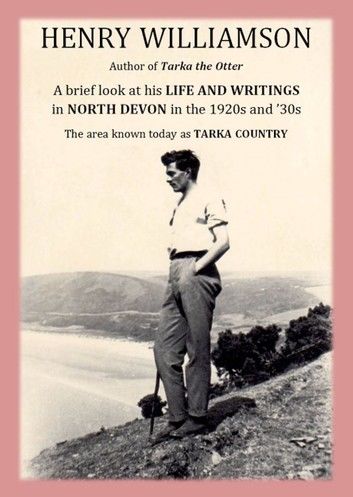| FindBook |
有 1 項符合
Henry Williamson, author of Tarka the Otter: A brief look at his Life and Writings in North Devon in the 1920s and '30s, the area known today as Tarka Country的圖書 |
 |
Henry Williamson, author of Tarka the Otter: A brief look at his Life and Writings in North Devon in the 1920s and '30s, the area known today as Tarka Country 作者:Henry Williamson 出版社:Henry Williamson 出版日期:2014-03-29 語言:英文 |
| 圖書館借閱 |
| 國家圖書館 | 全國圖書書目資訊網 | 國立公共資訊圖書館 | 電子書服務平台 | MetaCat 跨館整合查詢 |
| 臺北市立圖書館 | 新北市立圖書館 | 基隆市公共圖書館 | 桃園市立圖書館 | 新竹縣公共圖書館 |
| 苗栗縣立圖書館 | 臺中市立圖書館 | 彰化縣公共圖書館 | 南投縣文化局 | 雲林縣公共圖書館 |
| 嘉義縣圖書館 | 臺南市立圖書館 | 高雄市立圖書館 | 屏東縣公共圖書館 | 宜蘭縣公共圖書館 |
| 花蓮縣文化局 | 臺東縣文化處 |
|
|
In early 1921 the young Henry Williamson, traumatised by his experiences in the First World War, moved from London to a tiny cottage in North Devon, seeking solitude and renewal. Here he began to make his name as a writer with nature stories and sketches about rural life and his early novels; and here he wrote the Hawthornden Prize-winning 'Tarka the Otter' which remains the book for which he is probably best known today.
This short anthology serves as an introduction to Henry Williamson’s early writings about North Devon, which served to establish his reputation as perhaps the foremost British nature writer of the twentieth century.
There are extracts from Williamson’s classic novels 'Tarka the Otter' and 'Salar the Salmon', as well as from less well-known works including 'The Village Book', 'The Labouring Life', 'The Lone Swallows', 'The Pathway', 'The Children of Shallowford' and 'On Foot in Devon'. The extracts have been selected and edited by Tony Evans, who has also written accompanying explanatory notes, and Anne Williamson contributes a short biography which focuses on Williamson’s life in North Devon up to 1937, when he left to farm in Norfolk.
The selections are illustrated by contemporary photographs sourced from both local collections and Henry Williamson’s own albums, together with two maps of North Devon and Georgeham (the latter drawn by Williamson in 1932), the area today known as ‘Tarka Country’.
|









